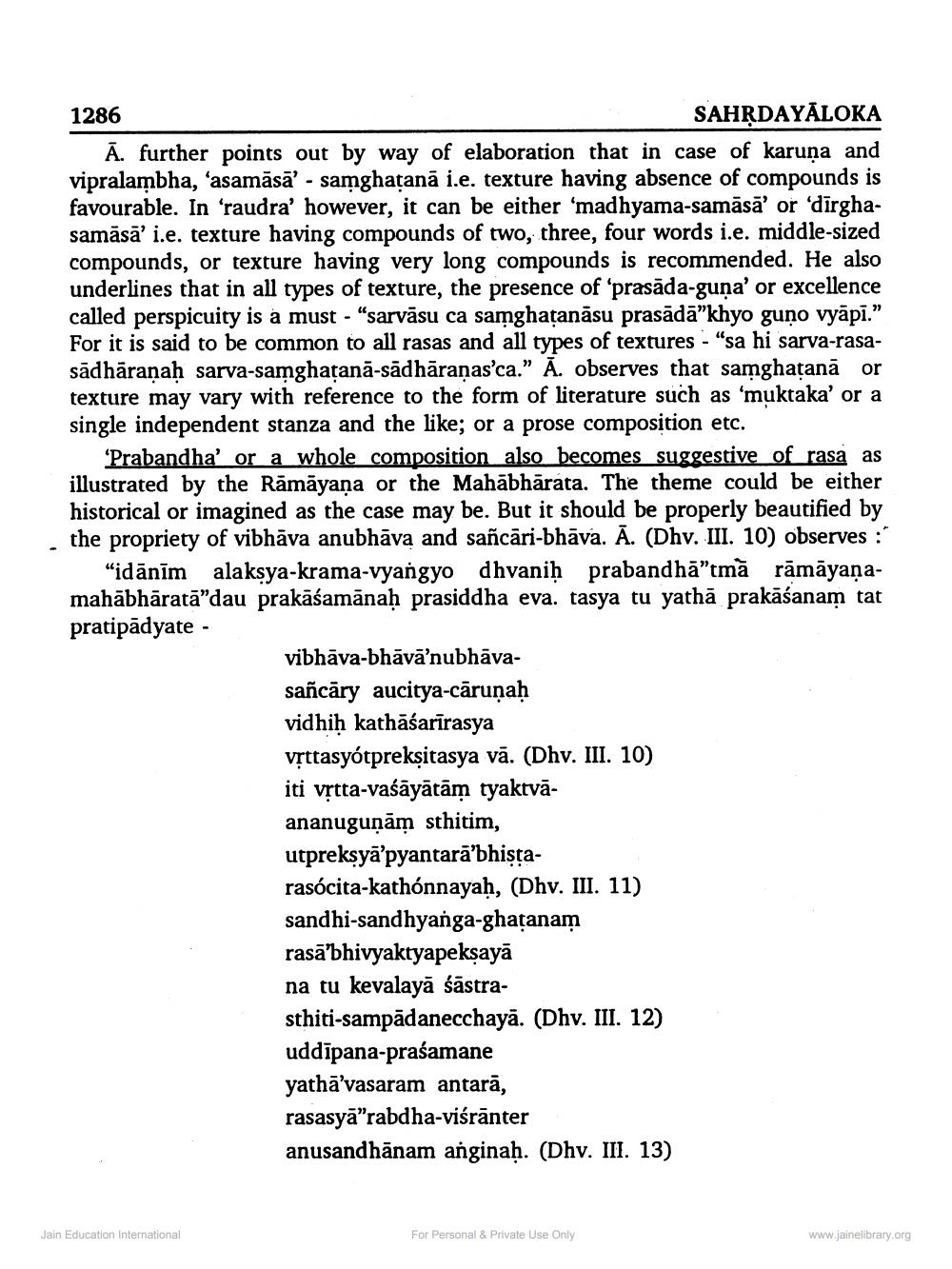________________
1286
SAHṚDAYALOKA Ā. further points out by way of elaboration that in case of karuņa and vipralambha, ‘asamāsā' - samghaṭanā i.e. texture having absence of compounds is favourable. In 'raudra' however, it can be either 'madhyama-samāsā' or 'dirghasamāsā' i.e. texture having compounds of two, three, four words i.e. middle-sized compounds, or texture having very long compounds is recommended. He also underlines that in all types of texture, the presence of 'prasāda-guna' or excellence called perspicuity is a must - "sarvāsu ca samghaṭanāsu prasādā"khyo guno vyāpi." For it is said to be common to all rasas and all types of textures - "sa hi sarva-rasasādhāraṇaḥ sarva-samghatana-sādhāraṇas'ca." A. observes that samghatana or texture may vary with reference to the form of literature such as 'muktaka' or a single independent stanza and the like; or a prose composition etc.
'Prabandha' or a whole composition also becomes suggestive of rasa as illustrated by the Rāmāyaṇa or the Mahabharata. The theme could be either historical or imagined as the case may be. But it should be properly beautified by the propriety of vibhāva anubhava and sañcari-bhāva. A. (Dhv. III. 10) observes:"
"idānīm alakṣya-krama-vyangyo dhvaniḥ prabandhā"tma rāmāyaṇamahābhāratā"dau prakāśamānaḥ prasiddha eva. tasya tu yathā prakāśanam tat pratipadyate -
Jain Education International
vibhāva-bhāvā'nubhāva
sañcāry aucitya-cāruṇaḥ vidhiḥ kathāśarīrasya
vṛttasyótpreksitasya vā. (Dhv. III. 10) iti vṛtta-vaśāyātām tyaktvāananuguṇām sthitim, utprekṣya'pyantara'bhiṣṭarasócita-kathónnayaḥ, (Dhv. III. 11) sandhi-sandhyanga-ghatanam rasa'bhivyaktyapekṣayā na tu kevalaya śāstra
sthiti-sampādanecchayā. (Dhv. III. 12) uddipana-praśamane
yatha'vasaram antarā, rasasya"rabdha-viśranter
anusandhānam anginaḥ. (Dhv. III. 13)
For Personal & Private Use Only
www.jainelibrary.org




